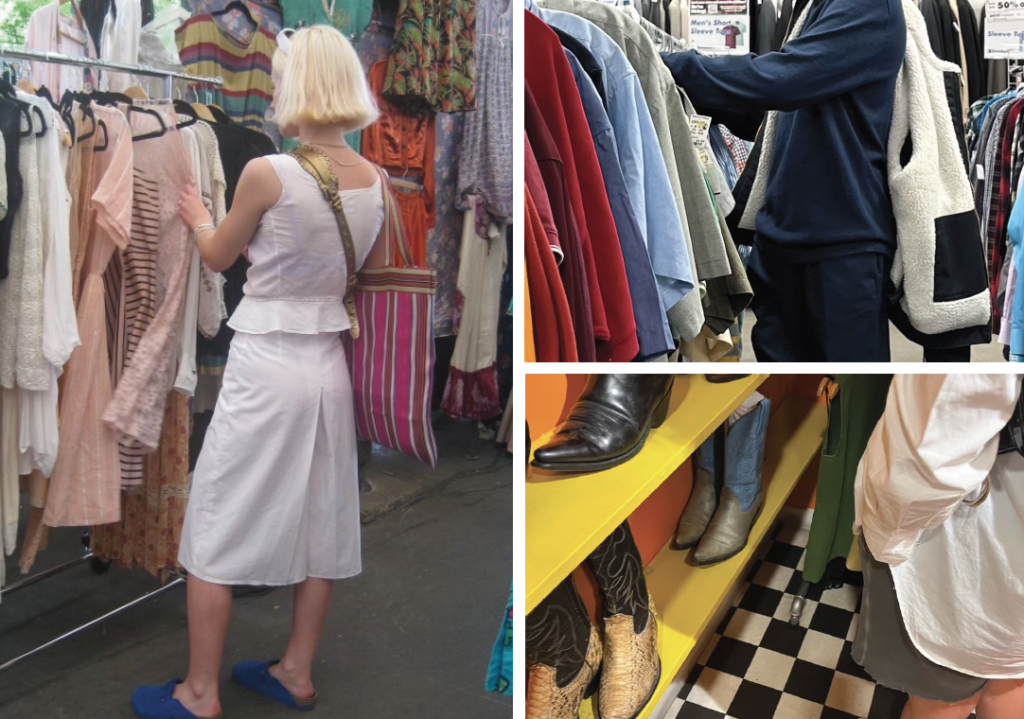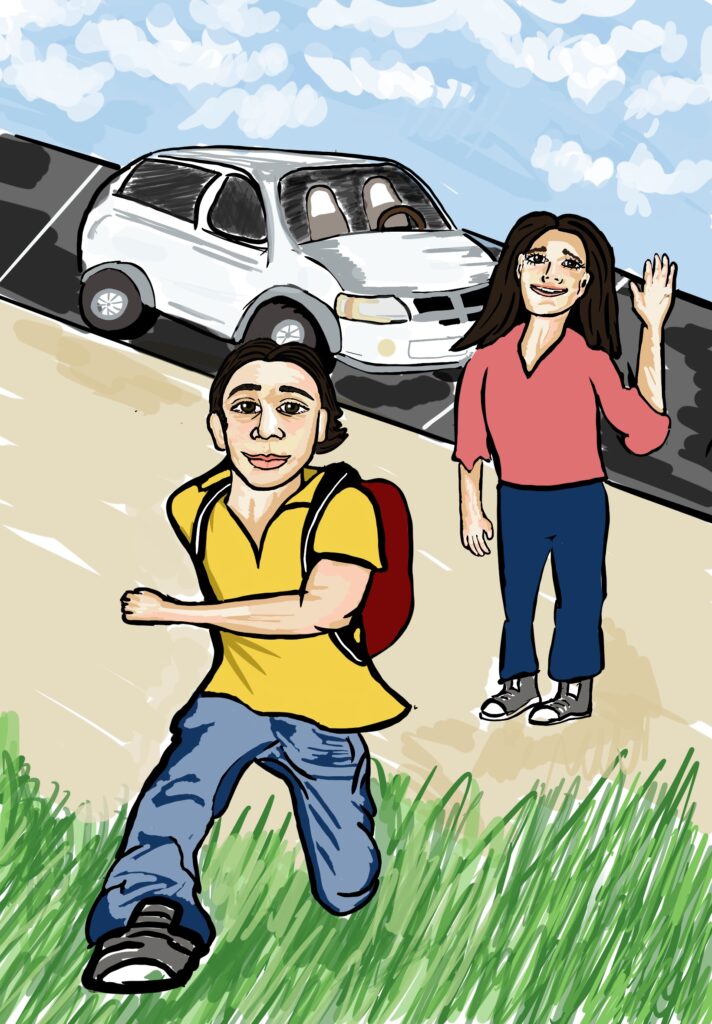
Photos courtesy of Ximena Castillo Nuñez ’24
Thrift shopping is not a new concept. Thrift stores first appeared in the 1950s. Thrifting makes essential goods like clothing, cookware, and furniture affordable and accessible to those who cannot consistently afford commercial retail prices. Through social media and popular culture, thrifting has been redefined for our generation as a fun activity used to enhance one’s style and express one’s individuality.
There are many justifiable reasons behind why people thrift. They may not be able to afford overpriced clothes and merchandise from commercial retailers, or they may not want to contribute to the large carbon footprint produced by the fashion industry; however, recently, people who have the means to purchase clothes from major retailers have begun shopping at stores like Goodwill, taking away necessary resources from those who rely on them.
What is a means of survival for a significant portion of the United States has been commodified as a trend for privileged individuals; it has become an “aesthetic” of sorts and a harmful one at that. There are stores created solely for this type of thrifting that curate collections of secondhand clothing in exchange for a variable upcharge. Vintage stores are also available for those looking to buy clothes that are unique. Stores like these include the popular Buffalo Exchange, L Train Vintage, and Brooklyn Brickhouse Vintage in New York City.
Nevertheless, when looking to go thrift shopping for leisure, it’s an individual’s responsibility to know the intended audience of the store, to take a moment to honestly consider what their motivations are in shopping there, and educate themselves on the possible implications of their actions.
A common motivator to go thrifting is wanting to reduce one’s carbon footprint through shopping secondhand. One of the biggest contributors to climate change is the fashion industry, which “accounts for a fifth of the 300 million tons of plastic produced each year globally,” according to the media company, Bloomberg.
Buying second-hand prevents one from adding to the carbon footprint created by the consumption of clothing from commercial brands. Efforts cannot stop at just buying secondhand: people genuinely interested in environmental preservation should also donate the clothes that they no longer wear as opposed to throwing them out or leaving them in the back of their closet. Especially in a time when trend cycles are so sporadic and temporary, it’s important to donate the clothes you no longer wear, regardless of how long you’ve had them or where they’re from.
Buying second-hand, especially for environmental purposes, doesn’t mean you have to buy from thrift stores like Goodwill. Instead, you can buy from sustainable fashion brands. Good On You is a site that will allow you to research and find brands that suit you but are within your price point, and sustainably made. This way, you can limit your negative impact on the environment without depriving others of necessary items.
As the trend of thrifting grows, thrift stores begin to run low on stock, making it harder for people to find the clothes they need. With a huge demand for clothes, and people willing to pay higher prices because they do not shop at second-hand stores based on financial necessity, the prices of items can get much higher, making it even more difficult for those who need it most to purchase clothes and other goods.
Oftentimes, privileged individuals will purchase clothes from thrift stores that do not even fit them, with the intentions of altering them, wearing them with a belt, or, in the most trendy fashion, tying them in the back with a shoelace. What’s even harder than finding clothes at a good price point, is finding plus-sized, or larger sized clothes at a reasonable price point. When individuals selfishly make these choices, they take away the few items that exist from a community that is historically marginalized in fashion.
Another contributor to the price spikes are the people who go to thrift stores to buy clothing in bulk and resell online for a profit. Reselling apps like Depop, Poshmark, and Vinted are online thrift stores that can be sorted through with keywords and hashtags. Often, the sellers on these apps inflate the prices significantly and, therefore, are exclusive. Clothes that once could have been of help to a family in need now become a source of profit for someone who can afford to shop at other stores.
Shopping at thrift stores just for fun is an immense privilege that many people fail to recognize. Not only is it a privilege, but it is objectively unethical. Thrift shopping is an important and essential option for many, but the new trend of thrifting for reasons other than necessity is severely problematic.




